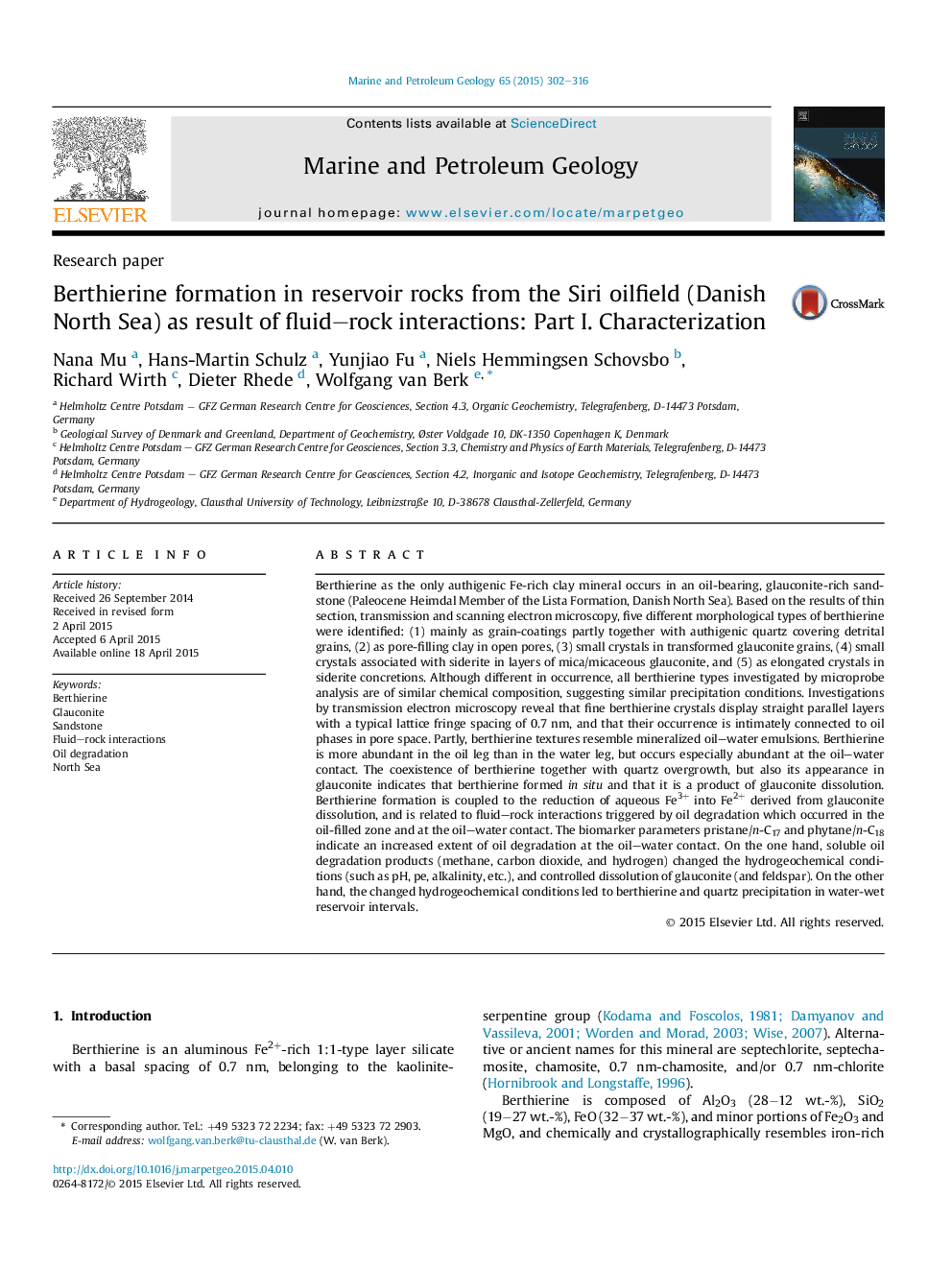| کد مقاله | کد نشریه | سال انتشار | مقاله انگلیسی | نسخه تمام متن |
|---|---|---|---|---|
| 6435061 | 1637160 | 2015 | 15 صفحه PDF | دانلود رایگان |
- We reported a grain-coating and pore-filling berthierine example in a glauconite-bearing sandstone.
- We examined berthierine using transmission electron microscopy.
- Berthierine formed in situ after oil filling rather than in early diagenesis.
- Glauconite was the precursor for berthierine formation.
- Organic-inorganic interactions trigged by oil degradation led to glauconite dissolution and berthierine formation.
Berthierine as the only authigenic Fe-rich clay mineral occurs in an oil-bearing, glauconite-rich sandstone (Paleocene Heimdal Member of the Lista Formation, Danish North Sea). Based on the results of thin section, transmission and scanning electron microscopy, five different morphological types of berthierine were identified: (1) mainly as grain-coatings partly together with authigenic quartz covering detrital grains, (2) as pore-filling clay in open pores, (3) small crystals in transformed glauconite grains, (4) small crystals associated with siderite in layers of mica/micaceous glauconite, and (5) as elongated crystals in siderite concretions. Although different in occurrence, all berthierine types investigated by microprobe analysis are of similar chemical composition, suggesting similar precipitation conditions. Investigations by transmission electron microscopy reveal that fine berthierine crystals display straight parallel layers with a typical lattice fringe spacing of 0.7Â nm, and that their occurrence is intimately connected to oil phases in pore space. Partly, berthierine textures resemble mineralized oil-water emulsions. Berthierine is more abundant in the oil leg than in the water leg, but occurs especially abundant at the oil-water contact. The coexistence of berthierine together with quartz overgrowth, but also its appearance in glauconite indicates that berthierine formed in situ and that it is a product of glauconite dissolution. Berthierine formation is coupled to the reduction of aqueous Fe3+ into Fe2+ derived from glauconite dissolution, and is related to fluid-rock interactions triggered by oil degradation which occurred in the oil-filled zone and at the oil-water contact. The biomarker parameters pristane/n-C17 and phytane/n-C18 indicate an increased extent of oil degradation at the oil-water contact. On the one hand, soluble oil degradation products (methane, carbon dioxide, and hydrogen) changed the hydrogeochemical conditions (such as pH, pe, alkalinity, etc.), and controlled dissolution of glauconite (and feldspar). On the other hand, the changed hydrogeochemical conditions led to berthierine and quartz precipitation in water-wet reservoir intervals.
Journal: Marine and Petroleum Geology - Volume 65, August 2015, Pages 302-316
